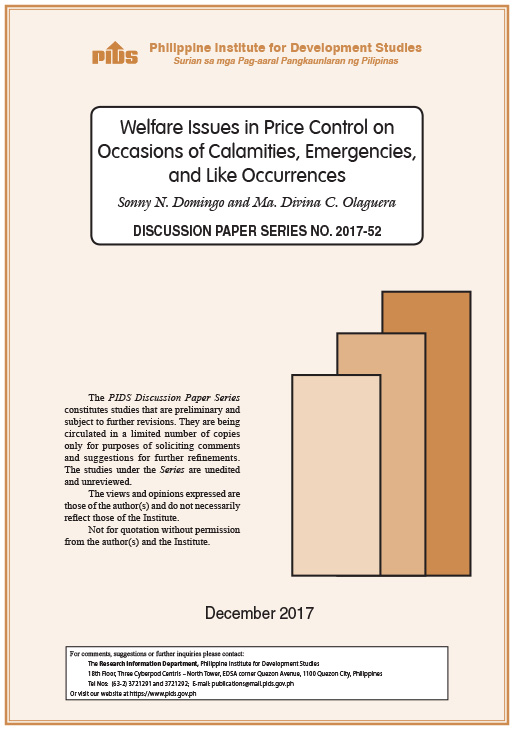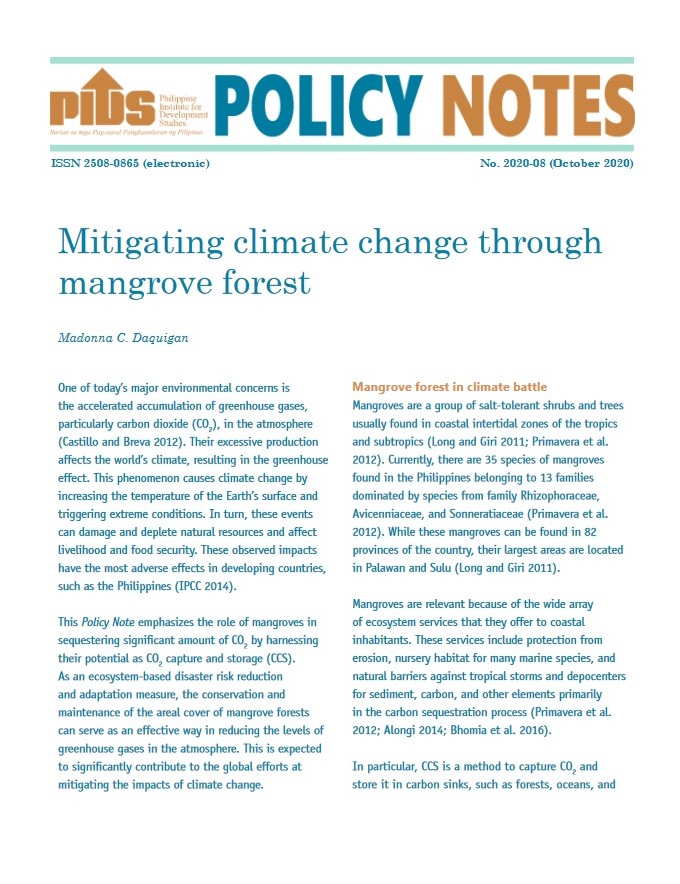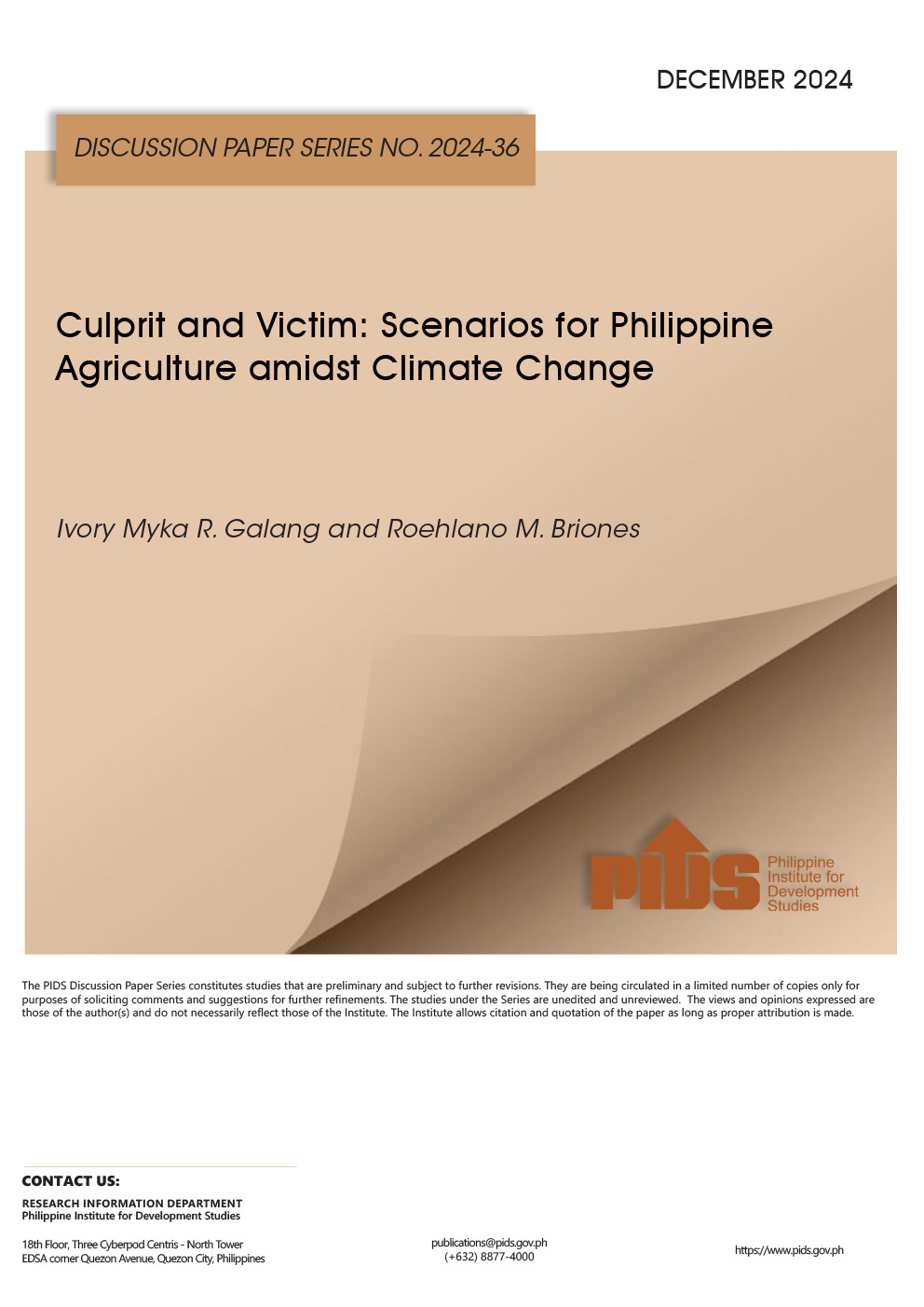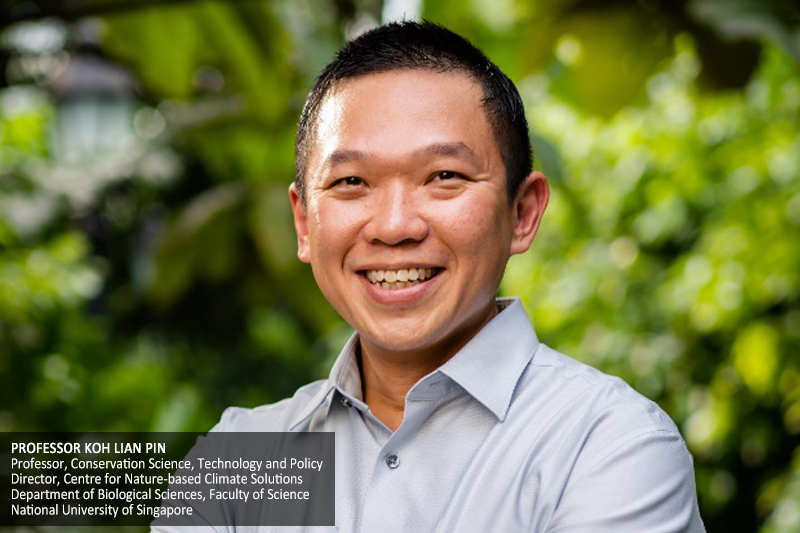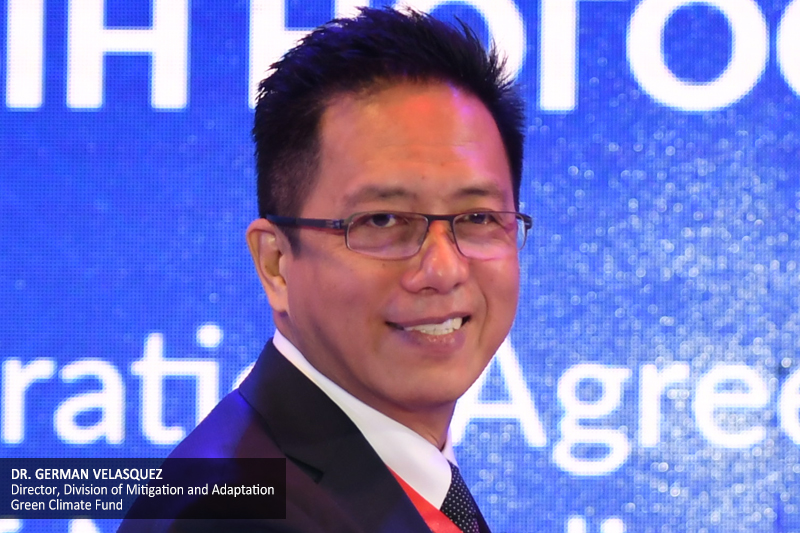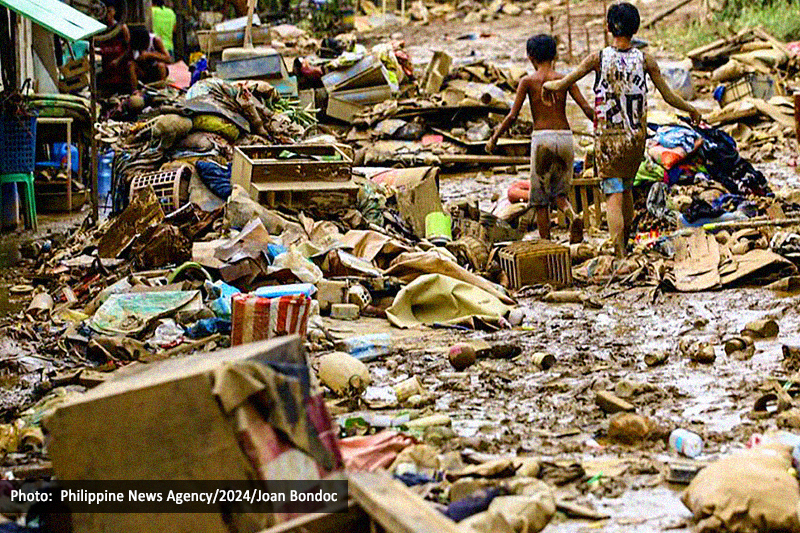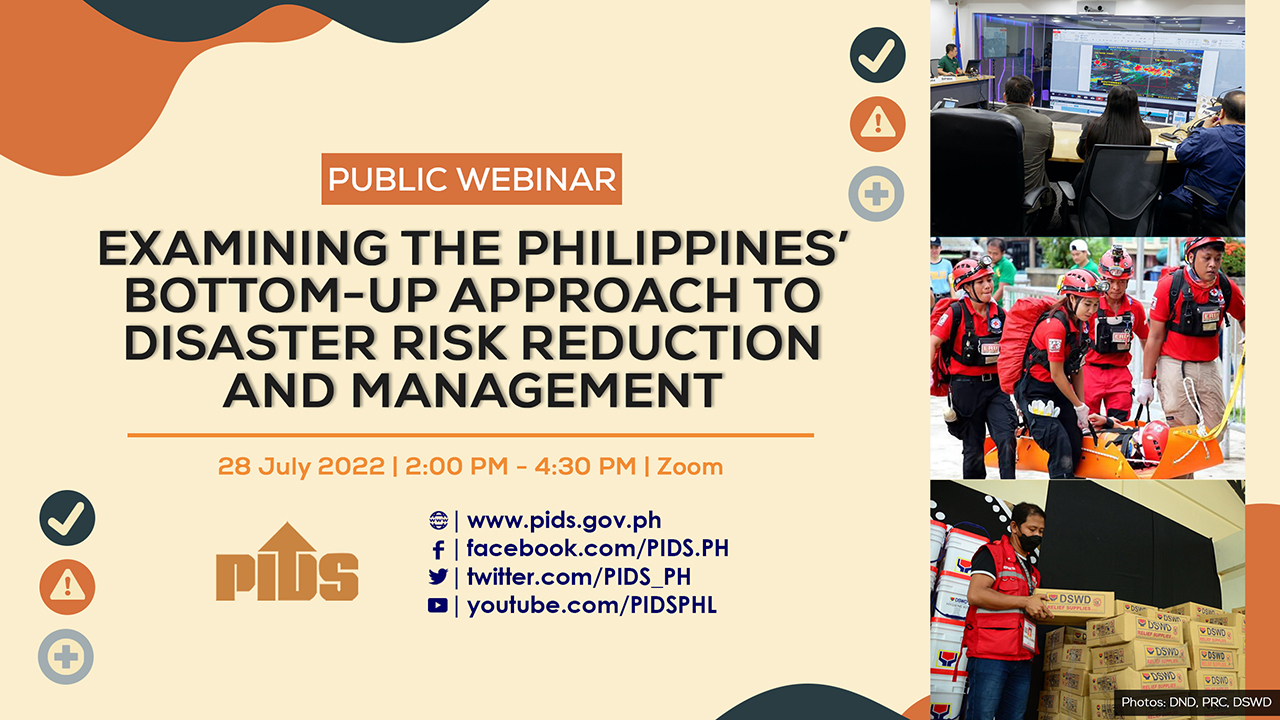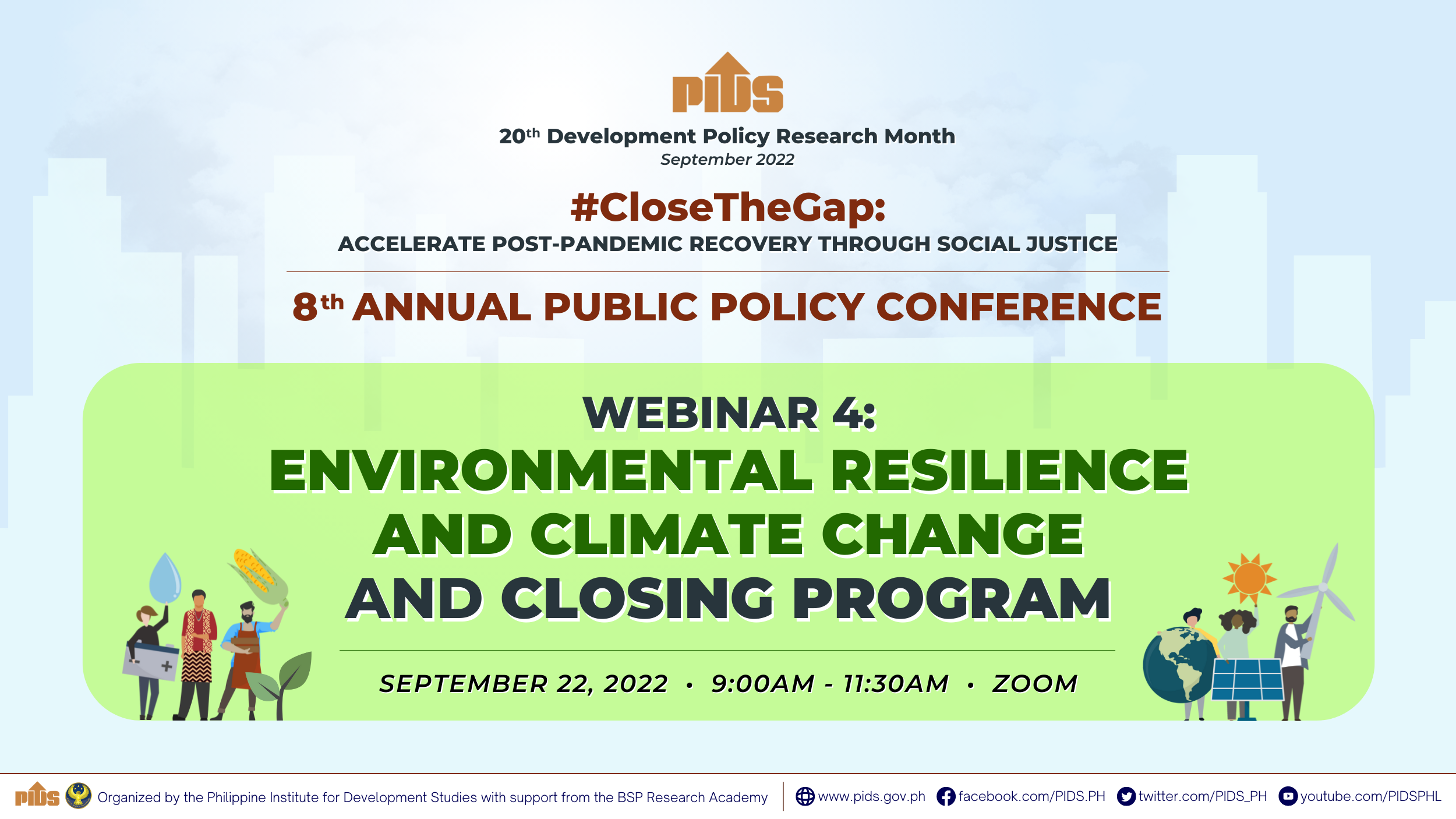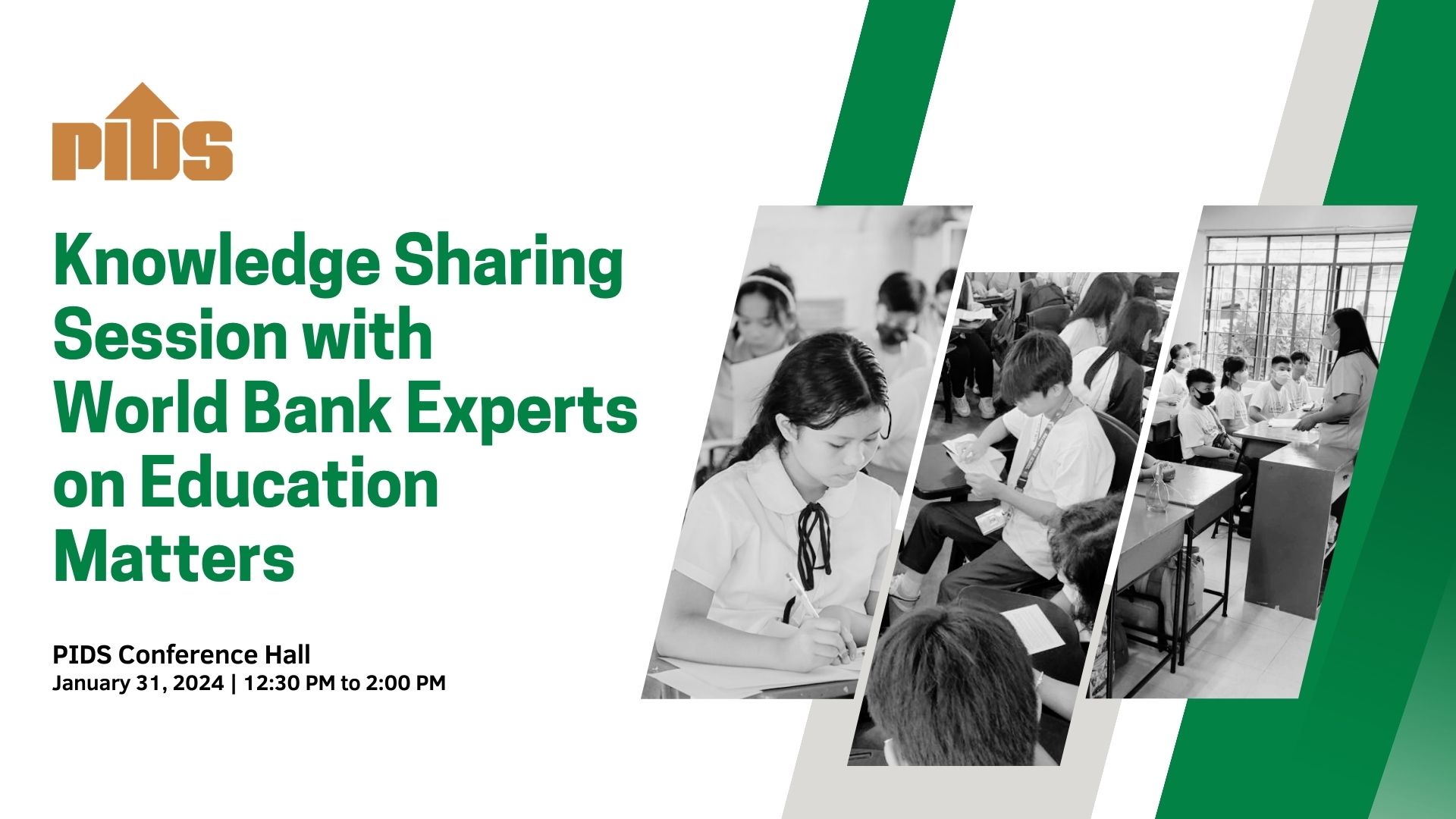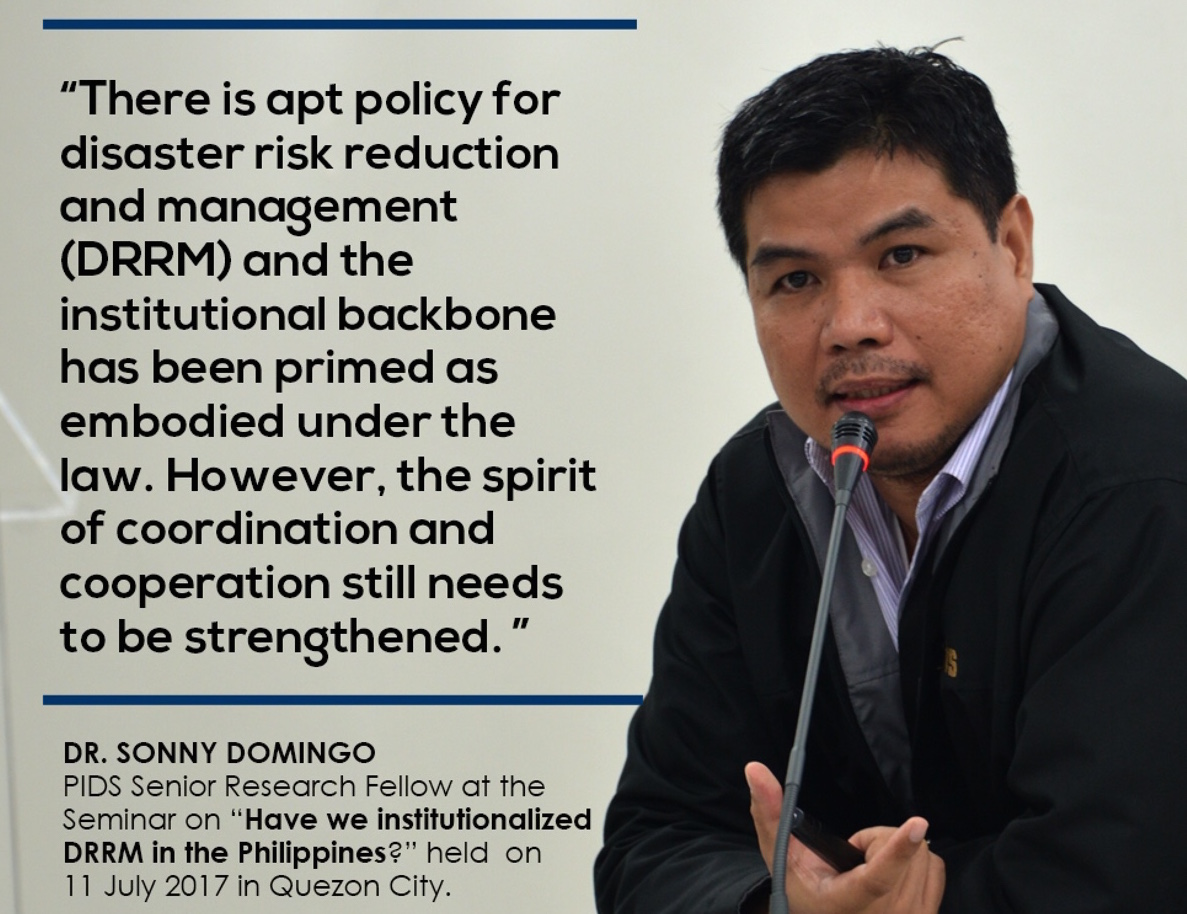
Although faced with bottlenecks, the country is slowly moving toward institutionalization of disaster risk reduction and management (DRRM).
This was what DRRM experts and advocates agreed during a seminar conducted by state think tank Philippine Institute for Development Studies (PIDS) on Tuesday, July 11. Titled “Have we institutionalized DRRM in the Philippines”, the seminar coincides with the nationwide observance of the National Disaster Resilience Month. It was attended by over a hundred participants from the academe, government, and civil society organizations.
PIDS Senior Research Fellow Sonny Domingo, whose study was presented during the seminar, said the challenges lie in the implementation of the Philippine DRRM Act of 2010, particularly the National DRRM Plan (NDRRMP).
Disaster agency?
Domingo said that many of these challenges would be addressed if there is a “concrete organization dealing with emergencies and disaster events”, urging the government to explore the possibility of having “an alternative bureaucratic platform responsible for all phases of DRRM”.
Given the structure and composition of the National Disaster Risk Reduction and Management Council (NDRRMC), a coordinating body authorized to craft policies as well as integrate, supervise, monitor, and evaluate DRRM operations in the country, “it perennially suffers from competition with other departmental missions,” Domingo explained.
While there are bills pending in both houses of Congress pushing for the creation of a DRR agency, Domingo said the NDRRMC should maximize its role as it has a lot of capital in terms of policy and core agencies.
“The NDRRMC right now has the tools to better itself. The law gives it teeth to coordinate, to manage the implementation of DRRM initiatives. It’s really up to it and the secretariat to make the most out of the premise provided by the law,” he said.
It is also important to note, according to Domingo, that while various agencies under the council have their own DRRM efforts, the level of priority they give varies depending on their mandates.
Meanwhile, DRR Network Philippines Programs Director Adelina Sevilla Alvarez said seeing the various DRRM efforts from different sectors, the country is making progress in institutionalizing DRRM, albeit very slow. She also urges different sectors to do their part in contributing to the sunset review of the Act.
Increasing resources
When it comes to the adequacy of DRRM resources like the NDRRM Fund and the Quick Response Fund (QRF), Domingo said there is an increasing trend, but distribution of resources is an issue. For one, the local DRRM fund is “too skewed against poor local government units” because the 5 percent of their internal revenue allotment is not the same for first class municipalities, Domingo explained.
Donna Lagdameo from the Climate Centre pointed out that the increasing QRF is not necessarily a good thing because it shows that the country is focusing more on response and still has a long way to go when it comes to disaster resilience.
“It begs me to ask, why is that happening? Is it because we have not anticipated the risk? Because if we were able to anticipate and prepare, we don’t need to augment funds for quick response,” Lagdameo said, adding that the purpose of disaster risk reduction is defeated.
Other issues
Based on his study, Domingo said that the NDRRMP “has not received the same treatment as the Philippine Development Plan” adding that “not so many individuals, executives or decision makers have read” the plan. Thus, it is not receiving enough leverage in terms of resource allocation.
Furthermore, while DRRM has already been mainstreamed in the country, still, the spirit of coordination and cooperation needs to be strengthened, Domingo said. At present, government agencies are doing their own DRRM initiatives, the author added.
“It’s really about the NDRRMP being cascaded into the central plans and the local government plans… Individual agencies were having their own programs and budgets related to DRRM, but a more refined way of going through things is to have that plan be translated into institutional initiatives,” Domingo said. ###
If you wish to know more about the study, download the policy note on the PIDS website.
This was what DRRM experts and advocates agreed during a seminar conducted by state think tank Philippine Institute for Development Studies (PIDS) on Tuesday, July 11. Titled “Have we institutionalized DRRM in the Philippines”, the seminar coincides with the nationwide observance of the National Disaster Resilience Month. It was attended by over a hundred participants from the academe, government, and civil society organizations.
PIDS Senior Research Fellow Sonny Domingo, whose study was presented during the seminar, said the challenges lie in the implementation of the Philippine DRRM Act of 2010, particularly the National DRRM Plan (NDRRMP).
Disaster agency?
Domingo said that many of these challenges would be addressed if there is a “concrete organization dealing with emergencies and disaster events”, urging the government to explore the possibility of having “an alternative bureaucratic platform responsible for all phases of DRRM”.
Given the structure and composition of the National Disaster Risk Reduction and Management Council (NDRRMC), a coordinating body authorized to craft policies as well as integrate, supervise, monitor, and evaluate DRRM operations in the country, “it perennially suffers from competition with other departmental missions,” Domingo explained.
While there are bills pending in both houses of Congress pushing for the creation of a DRR agency, Domingo said the NDRRMC should maximize its role as it has a lot of capital in terms of policy and core agencies.
“The NDRRMC right now has the tools to better itself. The law gives it teeth to coordinate, to manage the implementation of DRRM initiatives. It’s really up to it and the secretariat to make the most out of the premise provided by the law,” he said.
It is also important to note, according to Domingo, that while various agencies under the council have their own DRRM efforts, the level of priority they give varies depending on their mandates.
Meanwhile, DRR Network Philippines Programs Director Adelina Sevilla Alvarez said seeing the various DRRM efforts from different sectors, the country is making progress in institutionalizing DRRM, albeit very slow. She also urges different sectors to do their part in contributing to the sunset review of the Act.
Increasing resources
When it comes to the adequacy of DRRM resources like the NDRRM Fund and the Quick Response Fund (QRF), Domingo said there is an increasing trend, but distribution of resources is an issue. For one, the local DRRM fund is “too skewed against poor local government units” because the 5 percent of their internal revenue allotment is not the same for first class municipalities, Domingo explained.
Donna Lagdameo from the Climate Centre pointed out that the increasing QRF is not necessarily a good thing because it shows that the country is focusing more on response and still has a long way to go when it comes to disaster resilience.
“It begs me to ask, why is that happening? Is it because we have not anticipated the risk? Because if we were able to anticipate and prepare, we don’t need to augment funds for quick response,” Lagdameo said, adding that the purpose of disaster risk reduction is defeated.
Other issues
Based on his study, Domingo said that the NDRRMP “has not received the same treatment as the Philippine Development Plan” adding that “not so many individuals, executives or decision makers have read” the plan. Thus, it is not receiving enough leverage in terms of resource allocation.
Furthermore, while DRRM has already been mainstreamed in the country, still, the spirit of coordination and cooperation needs to be strengthened, Domingo said. At present, government agencies are doing their own DRRM initiatives, the author added.
“It’s really about the NDRRMP being cascaded into the central plans and the local government plans… Individual agencies were having their own programs and budgets related to DRRM, but a more refined way of going through things is to have that plan be translated into institutional initiatives,” Domingo said. ###
If you wish to know more about the study, download the policy note on the PIDS website.

